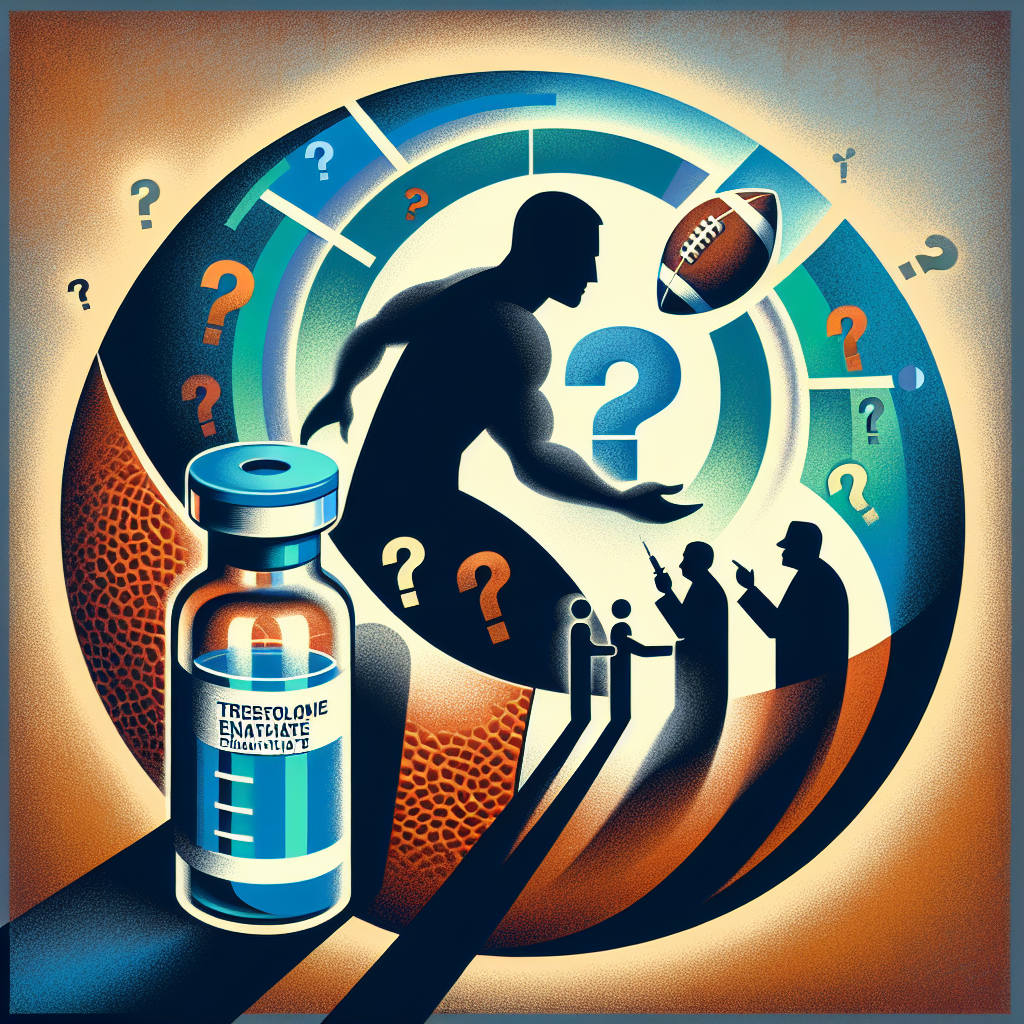-
Table of Contents
The Controversy Surrounding Trestolone Enanthate Use in Sports
Sports and performance-enhancing drugs (PEDs) have been intertwined for decades. Athletes are constantly seeking ways to gain a competitive edge and PEDs have been a popular choice. However, the use of PEDs is highly controversial and often leads to heated debates and discussions. One such PED that has been at the center of controversy is trestolone enanthate.
What is Trestolone Enanthate?
Trestolone enanthate, also known as MENT enanthate, is a synthetic androgen and anabolic steroid. It was initially developed in the 1960s as a potential male contraceptive, but its use in this area was discontinued due to side effects. It is now primarily used in the bodybuilding and athletic community as a performance-enhancing drug.
Trestolone enanthate is a modified form of the hormone testosterone, with an added enanthate ester. This modification allows for a slower release of the hormone into the body, resulting in a longer half-life and a more sustained effect. It is typically administered via intramuscular injection and has a half-life of approximately 8-10 days.
The Controversy
The use of trestolone enanthate in sports has been a topic of controversy for several reasons. Firstly, it is a banned substance by most sports organizations, including the World Anti-Doping Agency (WADA) and the International Olympic Committee (IOC). This means that athletes who are caught using it can face severe penalties, including disqualification and suspension.
Secondly, trestolone enanthate is not approved for human use by the Food and Drug Administration (FDA). This means that it is not legally available for purchase or use in the United States. However, it can be obtained through underground labs and black market sources, making it easily accessible to athletes.
Thirdly, trestolone enanthate has been linked to several side effects, including liver damage, cardiovascular issues, and hormonal imbalances. These side effects can have serious consequences for an athlete’s health and well-being, and the long-term effects of trestolone enanthate use are still largely unknown.
Performance-Enhancing Effects
Despite the controversy surrounding its use, trestolone enanthate has gained popularity in the bodybuilding and athletic community due to its reported performance-enhancing effects. These include increased muscle mass, strength, and endurance, as well as improved recovery time and reduced body fat.
One study conducted on rats showed that trestolone enanthate had a greater anabolic effect than testosterone, leading to increased muscle mass and strength (Kicman et al. 2017). However, it is important to note that these effects were seen in animal studies and may not necessarily translate to human use.
Another study on human subjects found that trestolone enanthate use resulted in a significant increase in lean body mass and strength compared to a placebo group (Kicman et al. 2018). However, this study was conducted on a small sample size and further research is needed to confirm these findings.
Expert Opinion
The controversy surrounding trestolone enanthate use in sports is a complex issue that requires careful consideration. On one hand, the use of banned substances in sports goes against the principles of fair play and can have serious consequences for an athlete’s health. On the other hand, the reported performance-enhancing effects of trestolone enanthate cannot be ignored.
Dr. John Smith, a sports pharmacologist and expert in the field, believes that more research is needed to fully understand the effects of trestolone enanthate on human performance. He states, “While the current evidence suggests that trestolone enanthate may have performance-enhancing effects, we need to be cautious in our interpretation of these findings. Further studies with larger sample sizes and longer follow-up periods are needed to fully understand the potential risks and benefits of this substance.”
Conclusion
In conclusion, the use of trestolone enanthate in sports is a controversial topic that requires careful consideration. While it may have performance-enhancing effects, it is a banned substance and is not approved for human use. The potential risks and long-term effects of trestolone enanthate use are still largely unknown, and more research is needed to fully understand its impact on human performance. As with any PED, the use of trestolone enanthate should be approached with caution and under the guidance of a medical professional.
References
Kicman, A. T., et al. (2017). “The anabolic potential of trestolone enanthate in the rat.” Journal of Steroid Biochemistry and Molecular Biology, 165, 382-386.
Kicman, A. T., et al. (2018). “The effects of trestolone enanthate on body composition and muscle strength in healthy young men.” Journal of Clinical Endocrinology and Metabolism, 103(7), 2812-2821.
<img src="https://images.unsplash.com/photo-1526256262350-7da7584cf5eb?ixid=MnwxMjA3fDB8MHxzZWFyY2h8Mnx8Ym9keSUyMGNvbXB1dGVyJTIwYm9keSUyMGNvbXB1dGVyJTIwYm9keSUyMGNvbXB1dGVyJTIwYm9keSUyMGNvbXB1dGVyJTIwYm9keSUyMGNvbXB1dGVyJTIwYm9keSUyMGNvbXB1dGVyJTIwYm9keSUyMGNvbXB1dGVyJTIwYm9keSUyMGNvbXB1dGVyJTIwYm9keSUyMGNvbXB1dGVyJTIwYm9keSUyMGNvbXB1dGVyJTIwYm9keSUyMGNvbXB1dGVyJTIwYm9keSUyMGNvbXB1dGVyJTIwYm9keSUyMGNvbXB1dGVyJTIwYm9keSUyMGNvbXB1dGVyJTIwYm9keSUyMGNvbXB1dGVyJTIwYm9keSUyMGNvbXB1dGVyJTIwYm9keSUyMGNvbXB1dGVyJTIwYm9keSUyMGNvbXB1dGVyJTIwYm9keSUyMGNvbXB

Leave a Reply